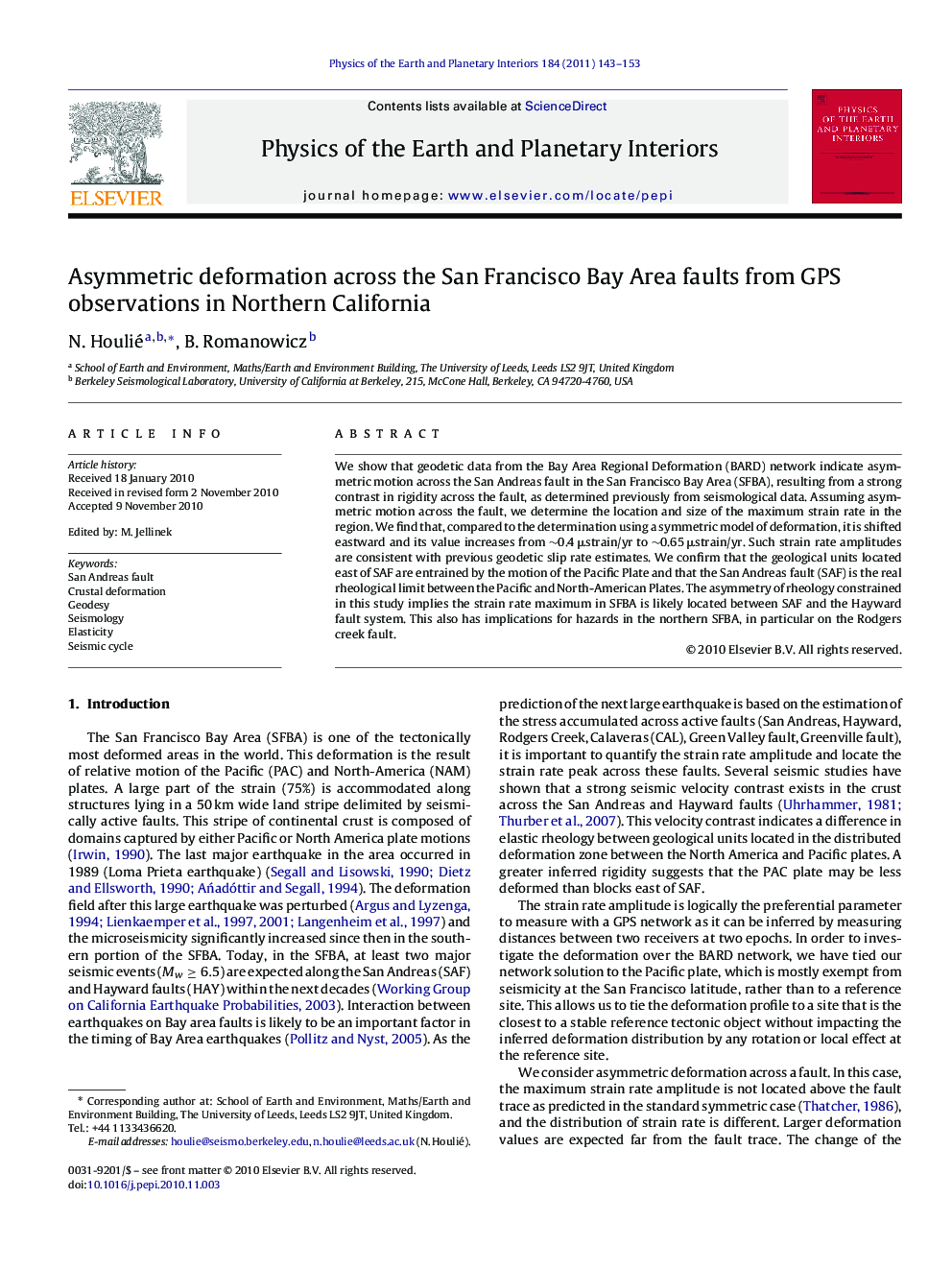| Article ID | Journal | Published Year | Pages | File Type |
|---|---|---|---|---|
| 4741998 | Physics of the Earth and Planetary Interiors | 2011 | 11 Pages |
We show that geodetic data from the Bay Area Regional Deformation (BARD) network indicate asymmetric motion across the San Andreas fault in the San Francisco Bay Area (SFBA), resulting from a strong contrast in rigidity across the fault, as determined previously from seismological data. Assuming asymmetric motion across the fault, we determine the location and size of the maximum strain rate in the region. We find that, compared to the determination using a symmetric model of deformation, it is shifted eastward and its value increases from ∼0.4 μstrain/yr to ∼0.65 μstrain/yr. Such strain rate amplitudes are consistent with previous geodetic slip rate estimates. We confirm that the geological units located east of SAF are entrained by the motion of the Pacific Plate and that the San Andreas fault (SAF) is the real rheological limit between the Pacific and North-American Plates. The asymmetry of rheology constrained in this study implies the strain rate maximum in SFBA is likely located between SAF and the Hayward fault system. This also has implications for hazards in the northern SFBA, in particular on the Rodgers creek fault.
